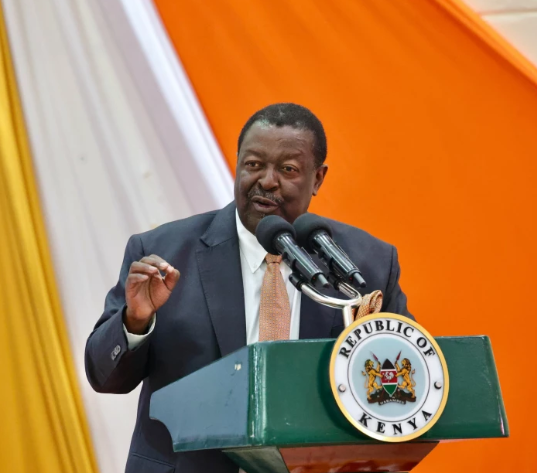Kenya has submitted a new fiscal plan to the International Monetary Fund (IMF) following weeks of nationwide protests that led President William Ruto to withdraw the Finance Bill, 2024.
The controversial bill, which sparked widespread protests, proposed new tax measures intended to raise approximately Sh347 billion to fund the 2024/25 budget. It was designed to align with the IMF’s fiscal conditions for Kenya, particularly aiming to address the country’s high debt levels.
Last week, the National Treasury announced plans to reduce spending for 2024/25 by 1.9 percent and increase the fiscal deficit to 3.6 percent of GDP, which will require additional borrowing. The government now intends to finance a Sh3.8 trillion budget for the fiscal year beginning July 1, down from the initially proposed Sh4.2 trillion.
Prime Cabinet Secretary Musalia Mudavadi, speaking before the Parliamentary Budget Committee on Monday, indicated that Kenya hopes the IMF board will review and approve the revised plan by the end of August. “We hope that Kenya’s proposal will be favorably considered so we can move past the current challenges,” Mudavadi said.
His comments come amid heightened scrutiny of Kenya’s relationship with the IMF, with public criticism directed at the Fund for pressuring the government to increase taxes. The IMF’s post-Covid-19 recovery program, worth $3.8 billion (Sh490.2 billion) and approved in 2021, is set to end in April next year.
Last week, the Institute of Economic Affairs (IEA) accused the IMF of altering its conditions for Kenya’s fiscal reconstruction, imposing additional demands that the institute claims are detrimental to the economy. The IEA criticized the IMF for increasing its demands from 26 to 36 in the sixth review, calling this increase unfair.
The IEA’s report, titled ‘And Then, Floods’: A Critical Macroeconomic Assessment of IMF Conditionality on Kenya, 2021-present, also accused the IMF of supporting Kenya’s proposal to devalue the shilling and accrue more external debt.
The report argued that fiscal adjustments should have been implemented earlier to allow monetary policy to address exchange rate issues but were instead delayed, resulting in targets that exceed best practices.
It further noted that the efforts to increase revenue ratios, while intended to support government functions, primarily served targets that led to instability in tax structures.



